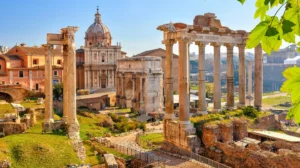The United Nations Educational, Scientific, and Cultural Organization (UNESCO) tirelessly champions the preservation and celebration of sites worldwide that hold exceptional value for humanity. Among the 1,199 sites on the World Heritage List, 993 represent cultural marvels (like the Pyramids of Giza), 227 showcase natural wonders (such as the Grand Canyon), and 39 embody a blend of both (like Machu Picchu). These sites span five key geographical and cultural regions: Europe and North America (565 sites), Latin America and the Caribbean (149), Asia and the Pacific (289), Africa (103), and Arab States (93). Currently, 168 countries boast at least one designated property, with new additions annually.
Criteria for World Heritage Sites
UNESCO meticulously evaluates candidates against ten criteria—six for cultural landmarks and four for natural environments. Cultural sites must exemplify human creative genius, embody significant historical, architectural, or technological developments, testify to unique cultural traditions, represent a distinct historical period, showcase traditional human settlements or interactions with the environment, or be linked to significant events, beliefs, or literary works. Natural sites must feature outstanding natural phenomena or beauty, represent significant geological or ecological processes, preserve vital habitats, or safeguard biodiversity hotspots.
Countries with the Most UNESCO World Heritage Sites
1. Italy (59):

Renowned for its rich historical legacy, Italy boasts 53 cultural and six natural sites. Notable highlights include Pompeii, the Historic Center of Rome, and the Dolomites.
2. China (57):
With a diverse cultural heritage, China’s 57 sites include the Great Wall, Terracotta Army, and Huanglong Scenic Area.
3. France (52):
Home to iconic landmarks like Notre Dame Cathedral and Mont Perdu, France’s 52 sites blend cultural and natural wonders.
4. Germany (52):
Germany’s 52 sites include architectural marvels like the Margravial Opera House and natural gems like the Wadden Sea.
5. Spain (50):
Spain’s rich history is reflected in its 50 sites, including the Camino de Santiago and Ibiza’s biodiversity hotspot.
6. India (42):
India’s cultural tapestry is showcased in sites like the Taj Mahal and the Great Himalayan National Park.
7. Mexico (35):
Chichén Itzá
Mexico’s 35 sites feature cultural treasures like Teotihuacan and natural wonders like Monarch Butterfly Biosphere Reserve.
8. United Kingdom (33):
From Stonehenge to St. Kilda, the UK’s 33 sites encompass cultural landmarks and pristine natural landscapes.
9. Russia (31):
Russia’s diverse heritage includes cultural landmarks like the Kremlin and natural wonders like Lake Baikal.
10. Iran (27):
Iran’s 27 sites, including Persepolis and the Hyrcanian Forests, offer a glimpse into its ancient history and natural beauty.
Embark on a UNESCO Adventure
UNESCO World Heritage Sites provide invaluable insights into humanity’s past, the planet’s geological history, and critical ecosystems. For those with a thirst for exploration, visiting countries with the most UNESCO sites promises a journey rich in cultural discovery and natural marvels.